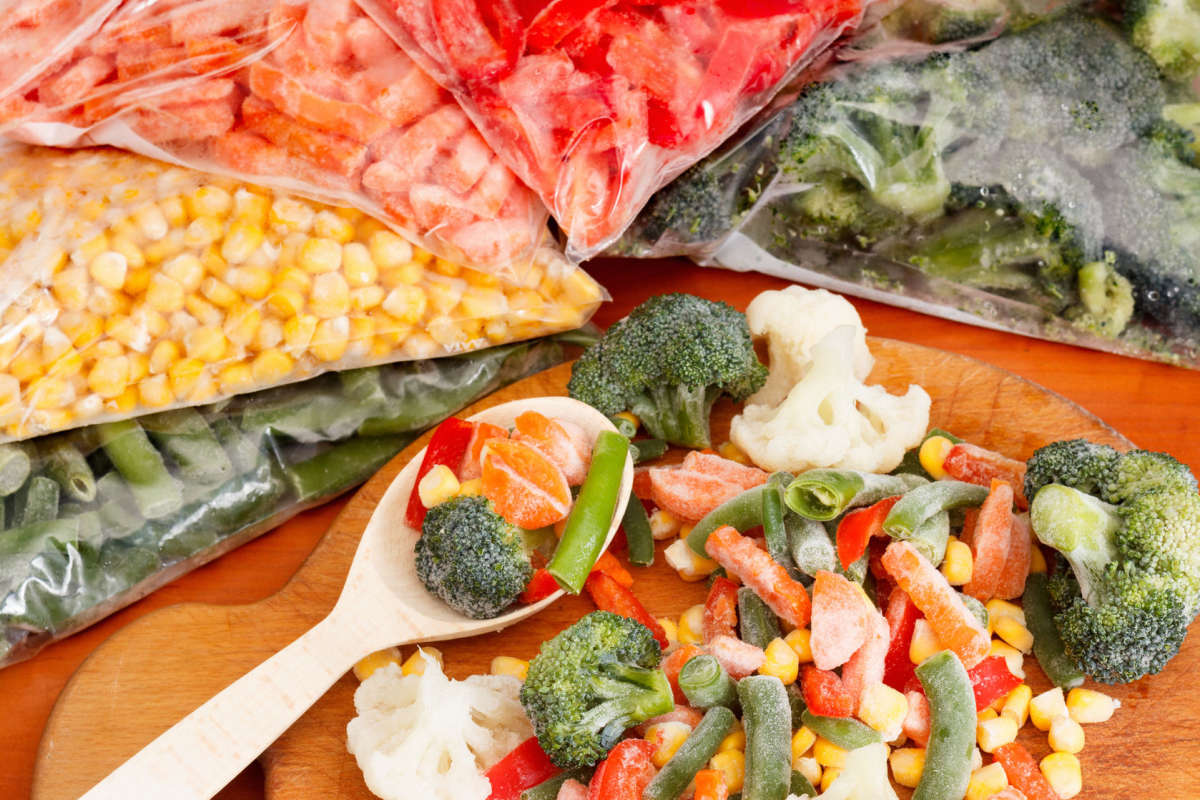Have you ever been left with so many leftovers after a party or a big dinner that there's no way you'd ever be able to eat them all before they go bad? (Or before you got sick of eating the same thing over and over again?)
You can greatly the extend the life of your food — even food that's already been cooked — by storing it in the freezer. You just need to make sure you're packaging it right and that you thaw and reheat it fully before eating it again. Here's some tips on how to safely freeze, thaw, and reheat foods.
Freezing Leftovers 101
First off, you want to make sure your freezer temperature remains consistently below 0°F. Fluctuating temperatures can affect the quality of frozen foods.
Leftovers that you originally bought raw and frozen (for example, fresh chicken, beef or pork that comes packaged and frozen) that you've since cooked can be refrozen to be thawed and reheated again.
You need to let any hot food cool to room temperature before you can package it for freezing, but don't let it sit around more than 30 minutes. Freeze it as soon as it reaches room temperature (to hasten the process, you can refrigerate it uncovered in a shallow container until cooled, then package and freeze it).
Cut meat into slices (3 inches thick or less) and remove all the stuffing from turkey and chicken and store separately.
Sealing and Storing Frozen Food
You'll want to seal your food in containers with as little air as possible unless you're freezing liquid or semi-liquid foods that expand when frozen — in which case, you'd want to leave a 1 1/2-inch space below the rim to allow for expansion. When you're freezing non-liquids in casserole dishes or containers with empty space between the food and lid, fill any "dead spaces" with crumpled wax paper.
Don't freeze tomato-based or other acidic foods in aluminum baking pans or cover them with aluminum foil. The acidity of the tomato sauce interacts with the foil and can result in tiny holes in the foil. Your food might also take on a metallic taste. Not good.
Supermarket wrappings are safe for most foods frozen for 1 to 2 months, but for the best quality, overwrap packages with heavy-duty freezer materials or store in plastic freezer bags. For food you're packaging yourself, use 1-gallon freezer bags. Press out all the air and seal tightly so the bags can be stacked on top of each other.
You also want to make sure not to overload your freezer. Avoid storing more than 2 to 3 pounds of food per cubic foot of freezer capacity so that air can circulate for proper freezing. Leave space between packages so the air can circulate around them.
If you're new to freezing and unsure about the quality of certain foods after you thaw and reheat, try freezing a small amount the first time as a quality test. Label all foods in your freezer with the recipe name, date you made it and date you froze it, number of servings, thawing and reheating directions, and "use by" date.
How to Prevent Freezer Burn

Freezer burn happens when foods are frozen for a long time or haven't been properly wrapped and sealed. Even though these foods don't pose any health risks, the freezer-burned areas will be dried out and tasteless. If that happens, cut away freezer-burned portions before or after cooking.
To avoid freezer burn, get as much air out as possible when you're wrapping the food for freezing to prevent moisture from getting in. Use moisture- and vapor-resistant packaging that can be sealed tightly. Vacuum-packing in FoodSaver® bags, for example, removes the air and keeps moisture out so food can be frozen longer without freezer burn.
Thawing Food Safely
Thawing food right way is vital to food safety. Precooked foods low in moisture content (breads, cakes, cookies) can be thawed at room temperature, but precooked foods higher in moisture content and/or containing dairy or egg products should be thawed in the refrigerator.
Never defrost perishable foods (meat, poultry, fish/seafood, dairy, eggs) outdoors, in a cold room in the house, or on the kitchen counter. Thaw meat/poultry/seafood and casseroles in the refrigerator for 24 to 48 hours or until completely thawed. You generally want to allow 8 hours per pound of meat, 4 hours per pound of poultry, and 6 hours per pound of fruit or vegetables. Foods thawed in the refrigerator can usually be safely refrozen without changing the taste or quality.
If you're in more of a rush, you can thaw things faster by placing your frozen packages in a watertight, sealed bag and covering them with cold water. Change the water every 30 minutes until the food is completely thawed.
To thaw out food in the microwave, remove the food from any store wrapping (foam trays or plastic wrap) that may release chemicals into food. Thaw on low heat for 6 to 8 minutes per pound of food. Once the food is defrosted, you can reheat it on high heat.
Reheating Frozen Food
You'll want to make sure that all previously cooked food is reheated to an internal temperature of at least 165°F. Use a clean meat thermometer to check the internal food temperature. The food also has to reach 165°F within 2 hours. If it won't, reheat it in smaller batches to shorten the reheating time.
To reheat frozen food without thawing it first, bake at 300°F to 350°F for almost double the original cooking time. Though that might feel really slow, cooking it a higher temperature will not result in a faster cooking time. The higher temperatures will just cook (and burn) the outside before the inside is completely thawed.
To reheat foods in the microwave, first cover them with microwave-safe wrap and vent to prevent steam buildup. Microwave the food until it's steaming and hot (again, at least 165°F), stirring partway through from the outside in to encourage even heating.
WARNING: Be careful when opening microwaved plastic bags. Steam can build up and cause burns when you open the bag.
What "Use By" and "Sell By" Labels Really Mean
Use by, sell by, best if used by ...they're all confusing. And do they really mean you need to throw something away once it's past its date? Here's a general guide for interpreting those dates:
- Use By: Food is no longer good to eat after the given date.
- Date of Pack or Date of Manufacture: This date tells you when the food was packed or processed. Freeze any food that will not be used within 3 to 5 days of purchase.
- Fresh Until, Pull By, or Sell By: This date is the last day that a particular food should be sold, but it can be safely used for 1 week past the "sell by" date (i.e., for dairy and fresh bakery products).
- Use Before or Best If Used By: Beyone this date food may begin to lose quality, but it can still be used safely (i.e., for frozen foods, cereals, canned food, pasta, rice).
Top Timesavers
Now that you're a freezing and reheating guru, you can really start saving some time by planning ahead. Buy fresh fruits and veggies, then cut them up, pack them and throw them in the freezer. Then you'll have them all presliced and ready to eat when you need them later.
You can also cook meat in advance and thaw and reheat when you need it. For a handy guide on how long different foods can be stored in the fridge or freezer, take a look at Safe Storage Times for Refrigerated or Frozen Foods.



